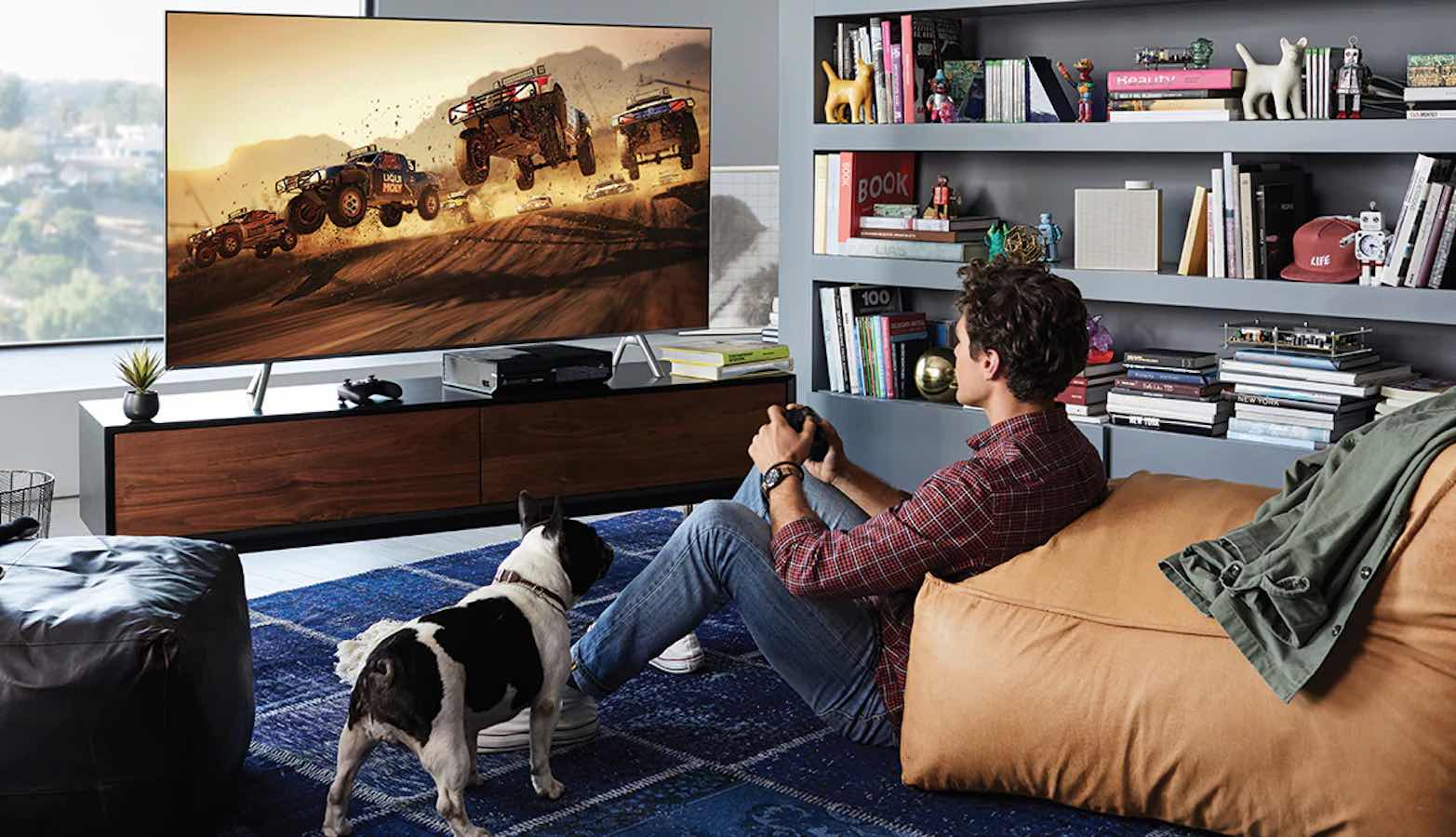
If you’re buying a TV for gaming, you’re going to look for a different set of features than if you just wanted a TV for watching movies. Gaming TVs have fast refresh rates, low input lag, and gaming menus where you can micro-adjust your console settings. With the release of the latest high-end gaming consoles, brands like Sony, LG, and Samsung have begun to design more and more TVs that cater specifically to gaming. Here’s what to look for in a gaming TV.
What is a gaming TV?
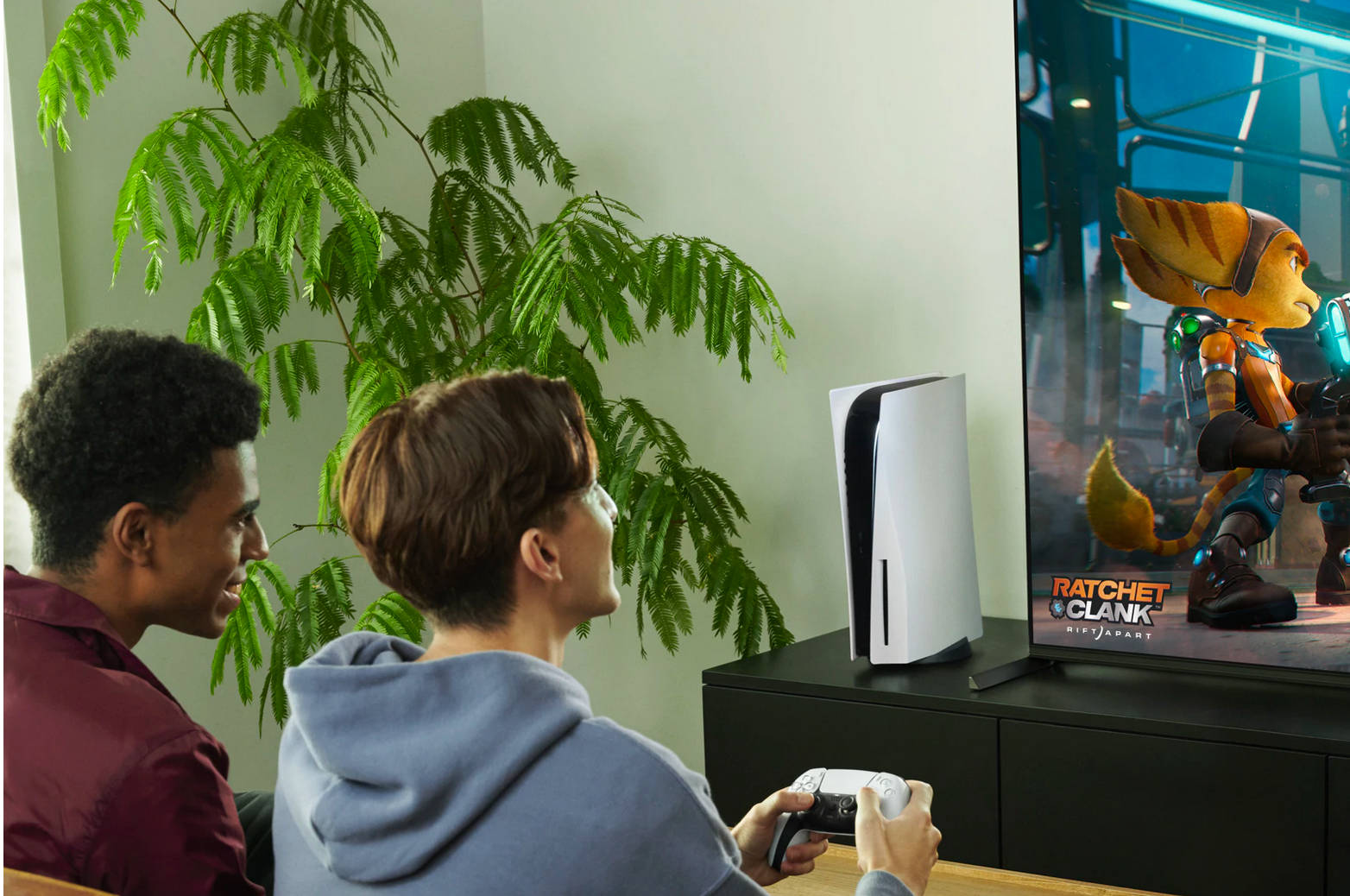
If you’ve brought home a PS5 or Xbox Series X over the past few months, you know having a TV designed to showcase your new console is just as important as the console itself. After all, if you’re trying to play and you experience lag or fragmentation, you can’t really get into the game.
What to look for in a gaming TV
All TVs have a backlight to provide the image you see on the screen. The most common type of backlight you’ll see on the latest gaming TVs are LED, Mini-LED, Quantum Dot, or OLED. You can read about backlights in the gaming TV buying guide, but you’ll find the most popular types of gaming TVs are OLED or Quantum Dot with 4K Ultra HD resolution. You can also find 8K QLED gaming TVs.
Game developers put a lot of time into world-building, so you want a TV that puts you in the center of that world and doesn’t pull you out until you’re ready to leave. You’ll find these TVs from different brands and in different sizes, but they should all share the following features.
HDR Support
HDR support and low input lag are two features that are must-haves when you’re gaming on your TV. High Dynamic Range ensures your game comes across as realistic and lifelike. HDR enhances contrast, brightens colours, and darkens shadows. It also enhances details in dark environments, so graphics will stand out without you having to adjust the brightness levels of your TV.
The latest HDR format is HDR10+, but there are also other types of HDR you’ll see when searching for a gaming TV including HDR10, Dolby Vision, and HLG. All types will enhance brightness and contrast, with HDR10 found on most standard 4K TVs and Dolby Vision and HDR10+ supported on TVs with enhanced features.
Low Input Lag
Along with HDR, the other must-have feature for gaming is low input lag. Lag is measured in milliseconds, and it’s the time it takes your TV to display the commands you’re issuing from your controller. If your TV is constantly lagging behind your input, especially in situations where you’re playing MMO games, you might as well hang up your controller. Some of the latest gaming TVs have sub-1ms input lag, meaning your game will play so seamlessly your TV won’t hesitate unless you do.
4k @ 120Hz gaming
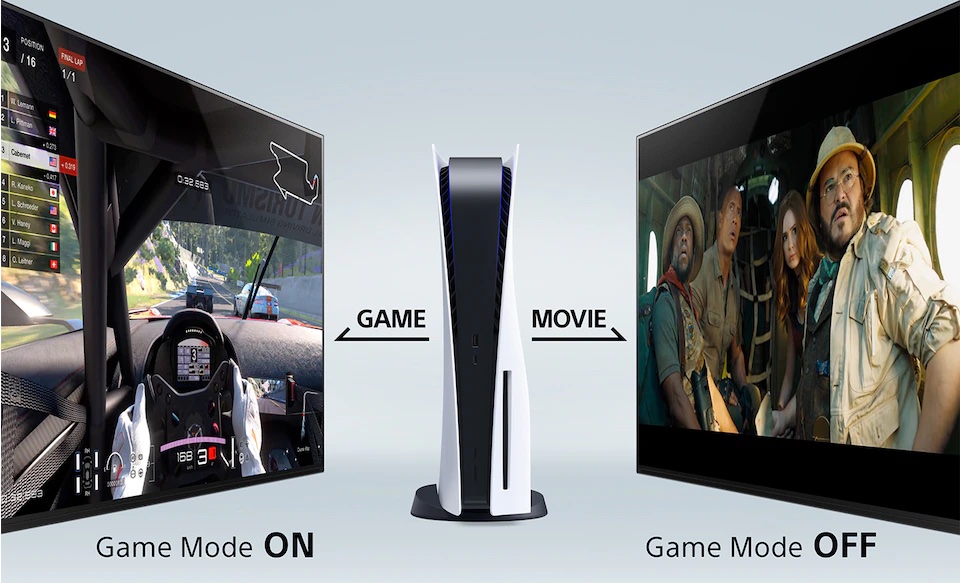
The latest gaming consoles can deliver 4K gaming at 120Hz. 120Hz refers to the refresh rate of your TV while gaming. Refresh rate is how often your screen refreshes the data displayed per second. You can read more in this article about display refresh rate.
Most 4K TVs are either 60Hz or 120Hz. If you see a TV with a 240Hz refresh rate that means the TV uses software to speed up the rate it can process images.
Frame rate refers to the number of frames per second (fps) the video game was created with. Most TV shows and movies are shot at 24fps or 30 fps, and most video games are designed at 60fps. The more frames per second, the smoother your game will appear.
A gaming TV that runs 4K games at 120Hz will have minimal to non-existent screen flickering and motion blur because it can support double the refresh rate of your game. If you have a console that can deliver on that level but your TV doesn’t match up, you aren’t going to have as good of an experience as you would with a TV that can support 4K/120Hz.
Adaptive sync technology
If you’re plugging your computer into your gaming TV or you’re using your gaming TV for console gaming and as a monitor for your computer, you’ll want compatibility with adaptive sync as one of your features. Adaptive sync technology removes input lag by auto-adjusting the TV’s refresh rate to match the output of the GPU on your computer.
Auto low latency mode
Some gaming TVs have auto low latency mode. This feature may show up as ‘game mode’ on many of the latest displays. It takes the signal sent by your console and automatically switches to a low-lag, low-latency mode for the smoothest possible gaming experience.
HDMI 2.1
To get the most out of your Xbox Series X or PS5, you’ll need to plug it into your TV via HDMI 2.1. Most older TVs have HDMI 2.0b, and if you can only plug into your display that way you’ll miss out on the highest resolution and frame rate your console can provide. Many of the latest TVs also have four or more HDMI ports so you can plug in multiple consoles. You’ll want to make sure you have an HDMI cable that can support the console-to-TV connection, so look for 4K Ultra HD HDMI cables for the best connection.
Variable refresh rate
Some of the latest gaming TVs can support variable refresh rate (VRR). VRR enables your TV to match the frame rate sent by your gaming console. A TV that can support VRR will give you the most detailed gameplay possible, and it will reduce screen judder, frame tearing, and lag.
Aspect ratio for super-wide gaming
A few of the latest gaming TVs have one-tap changes for aspect ratio, so if you’d like to game in super-wide 32:9 you can easily adjust your settings to do so.
Wi-Fi 5 vs Wi-Fi 6
Some types of gaming TVs support Wi-Fi 5 or Wi-Fi 6. If you’re connected to your router via Wi-Fi you’ll want to know if your TV can process the bandwidth required to download games or maintain a stable connection to your online game. Wi-Fi 5 supports a maximum of 3.5 gigabits per second (Gbps) while Wi-Fi 6 gives you a maximum of 9.6 Gbps.
Gaming TVs by brand
If you’re looking for a TV designed for blazing-fast gameplay, look no further than the big three; Sony, Samsung, and LG all have built-in features to give you the most immersive gaming possible.
Sony gaming TVs
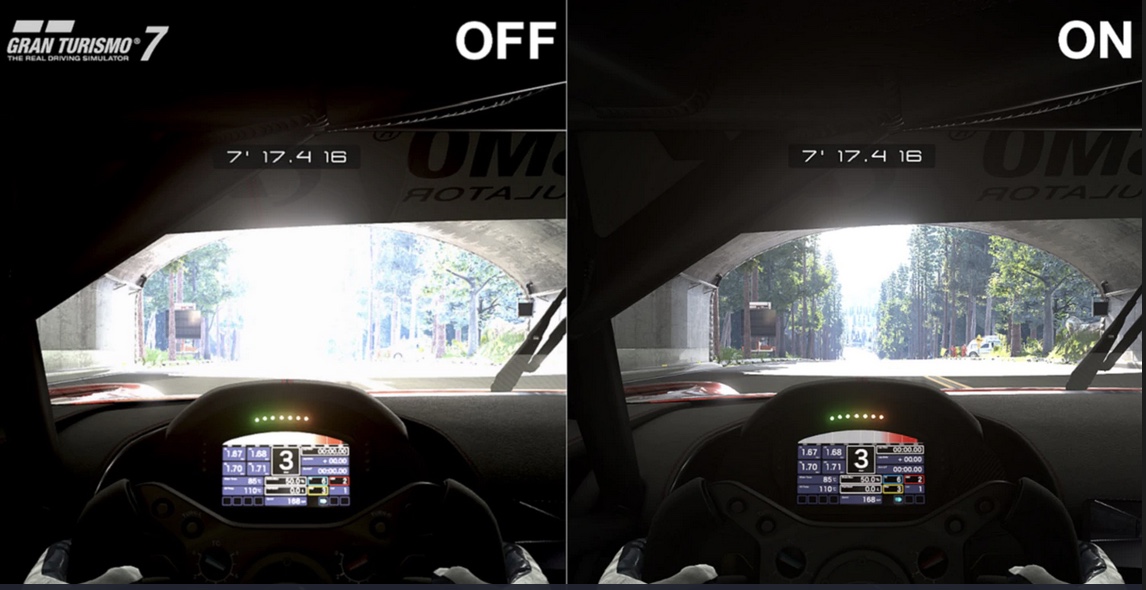
For colour, clarity, and precise detail, you can’t go wrong with a Sony TV. The latest Sony BRAVIA TVs are specifically designed for gaming with the PS5. You can plug in your PS5 and the TV will guide you through every step of the setup process including which HDMI port is best to plug into and how to enhance HDR.
They have features like HDR, XR Motion Clarity and 120Hz refresh rate so you can play 4K games at max refresh, and XR 4K Upscaling so even your older console games look rich and detailed. While you can get Sony BRAVIA XR features on LED TVs, if you’re looking for the best colour reproduction for everything you play, you can’t go wrong with a Sony BRAVIA OLED or Sony BRAVIA Mini-LED. With 4K HDR, XR Triluminos Pro, and OLED technology, you get the deepest, richest blacks and billions of colours.
Samsung gaming TVs
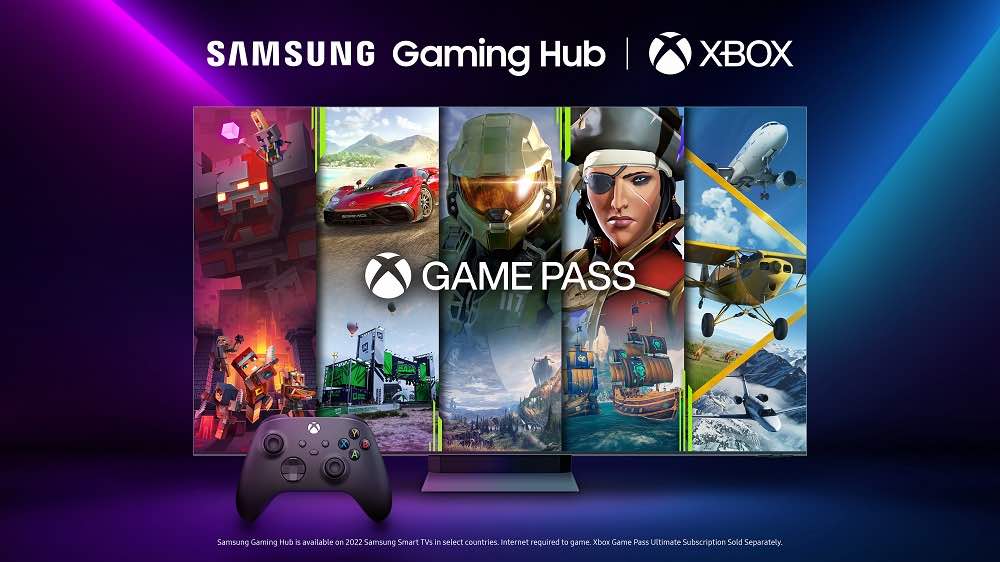
If you want proof that Samsung takes gaming seriously, take a look at their latest Samsung TVs. Samsung QLEDs promise to give gamers an experience they’ll never forget, and you get your choice of 4K or 8K with all the benefits of Quantum Matrix Technology.
Samsung QLEDs have Quantum HDR 32X and HDR10+ for intense colour and contrast, Quantum Dot technology for max colour volume, and high-level gaming features you’ll have to test out to believe. Samsung’s Game bar gives you easy access to game set up, and it will show everything from input lag to frames per second in real-time. There are also features like Motion Xcelerator Turbo+ with 4K 120Hz refresh rate, Adaptive FreeSync Premium Protechnology to prevent stuttering and compensate for low frame rate, and Auto Low Latency Mode to optimize gameplay.
One of the best new features on Samsung gaming TVs is the recent addition of Xbox Game Pass. The app is now available on all 2022 Samsung gaming TVs, and to play all you’ll need to do is plug in your controller, log in to your Xbox Game pass account, and play your favourites.
LG gaming TVs

If you’d like a ringing endorsement for LG gaming TVs, Best Buy blog’s editor Jon swears by the LG OLED for blistering fast gaming on all types of consoles. The latest LG gaming TVs have the brightest colours, high refresh rates, low lag times, and ultra-fast response times for every game you play. LG NanoCell even has features designed for gaming including 360-degree VR play, HDR Dynamic Tone Mapping, and built-in video presets to seamlessly switch from gaming to movies.
Which gaming TV will you choose?
Whether you’re a pro gamer with the PS5 or Xbox Series X on your bookshelf or you’re a casual gamer who loves to play Nintendo Switch with the family, the latest gaming TVs will elevate your experience like nothing else can.
You can find the perfect gaming TV for you at Best Buy.



